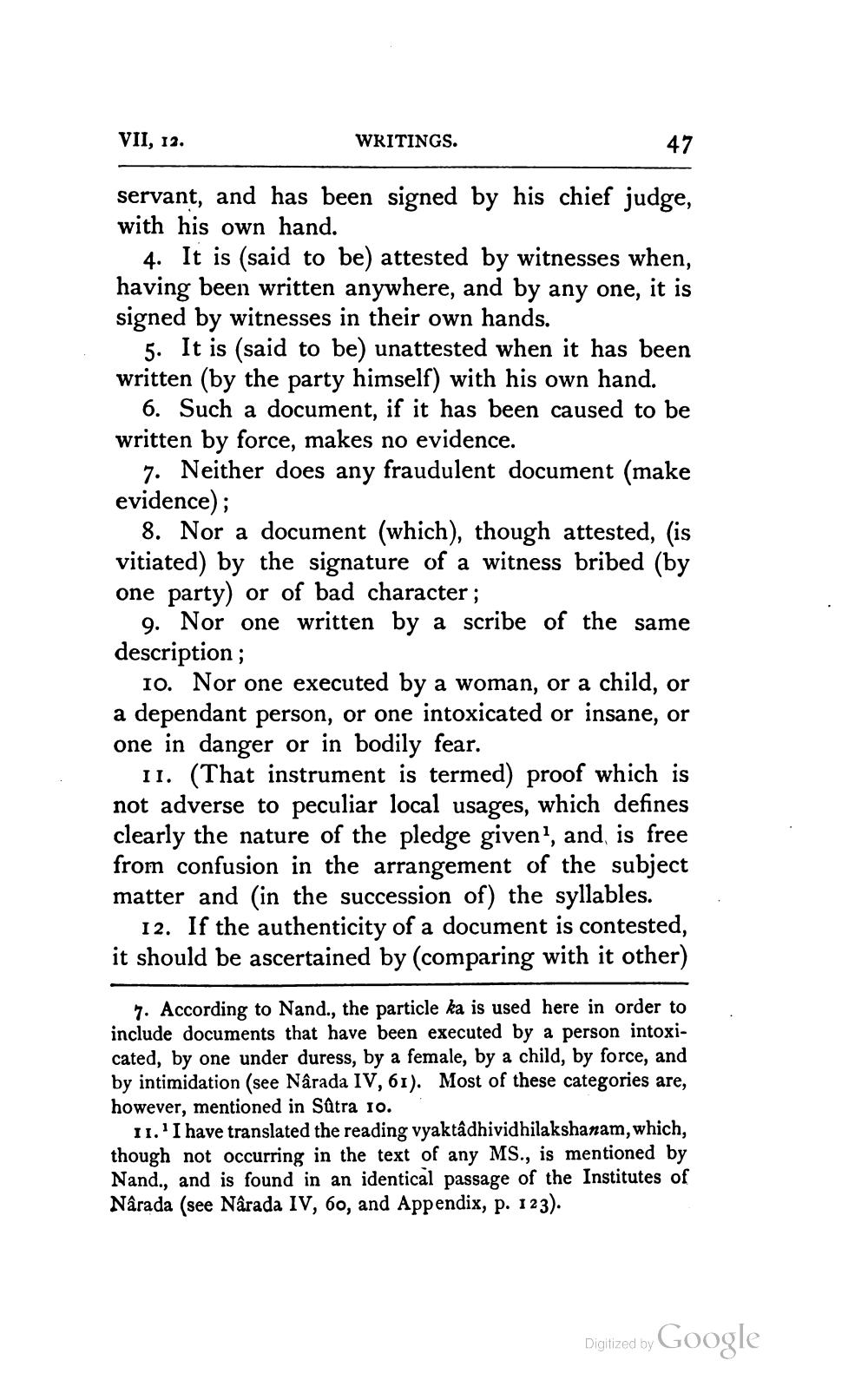________________
VII, 13.
WRITINGS.
servant, and has been signed by his chief judge, with his own hand.
4. It is (said to be) attested by witnesses when, having been written anywhere, and by any one, it is signed by witnesses in their own hands.
5. It is (said to be) unattested when it has been written (by the party himself) with his own hand.
6. Such a document, if it has been caused to be written by force, makes no evidence.
7. Neither does any fraudulent document (make evidence);
8. Nor a document (which), though attested, (is vitiated) by the signature of a witness bribed (by one party) or of bad character ;
9. Nor one written by a scribe of the same description;
10. Nor one executed by a woman, or a child, or a dependant person, or one intoxicated or insane, or one in danger or in bodily fear.
11. (That instrument is termed) proof which is not adverse to peculiar local usages, which defines clearly the nature of the pledge given", and is free from confusion in the arrangement of the subject matter and (in the succession of) the syllables.
12. If the authenticity of a document is contested, it should be ascertained by (comparing with it other)
7. According to Nand., the particle ka is used here in order to include documents that have been executed by a person intoxicated, by one under duress, by a female, by a child, by force, and by intimidation (see Narada IV, 61). Most of these categories are, however, mentioned in Sätra ro.
11. 'I have translated the reading vyaktâdhividhilakshanam, which, though not occurring in the text of any MS., is mentioned by Nand., and is found in an identical passage of the Institutes of Narada (see Narada IV, 60, and Appendix, p. 123).
Digitized by Google




